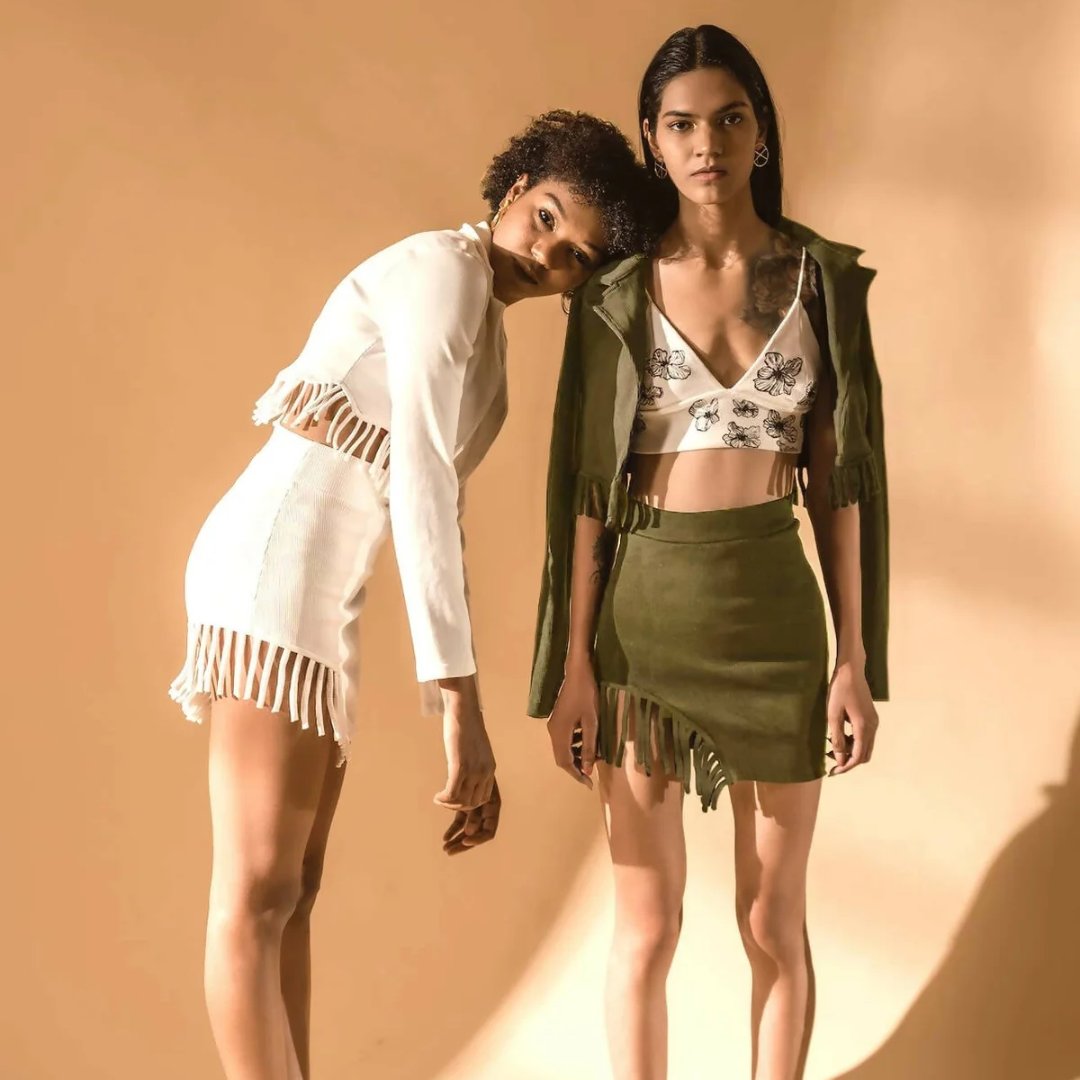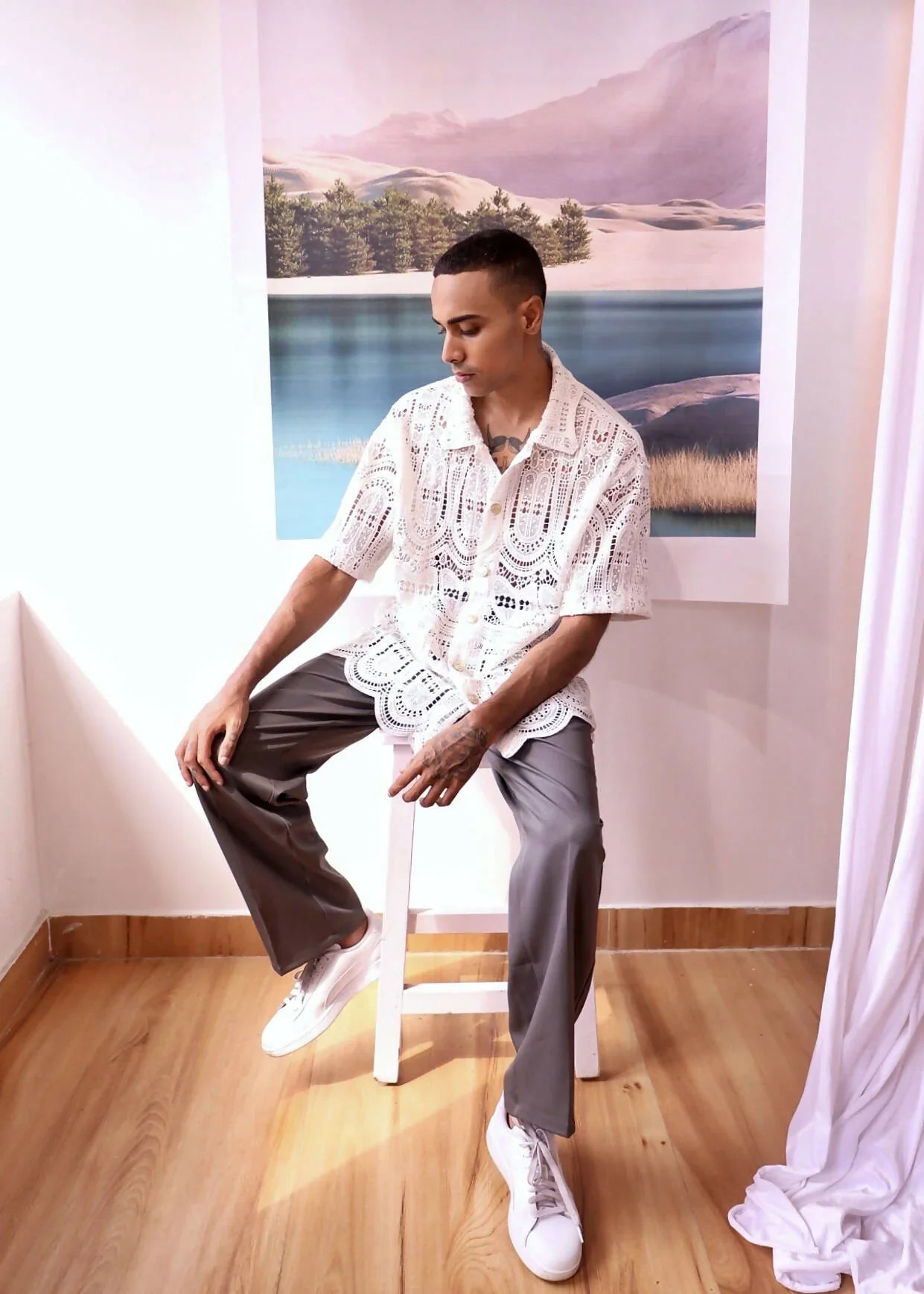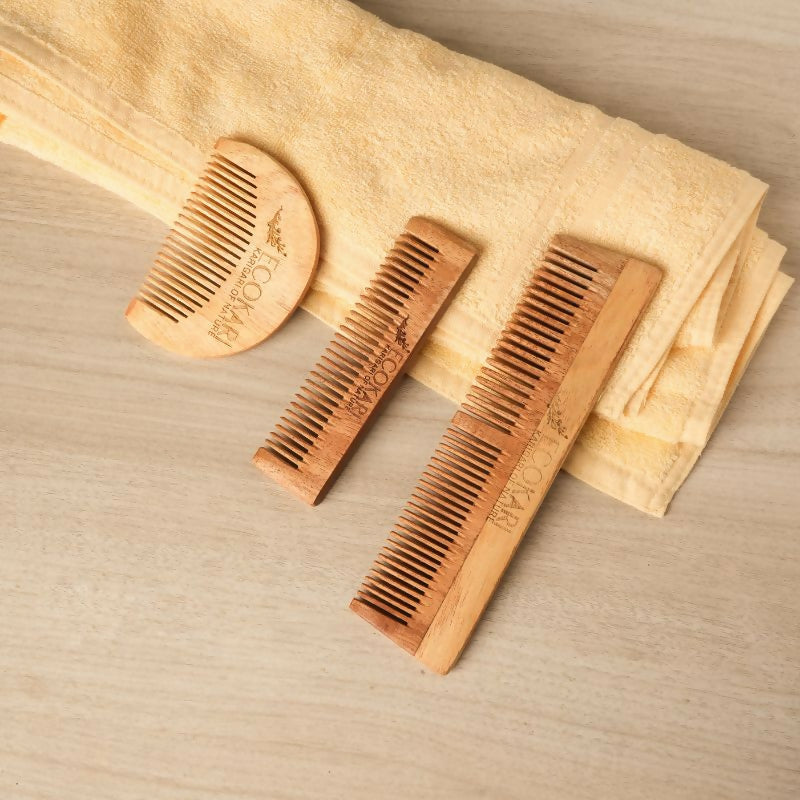Interview with Dzaino

REFASH: How was Dzaino born?
Hanna: Julia and I have been friends for over ten years and we started collaborating when we developed our yoga mat bag. We brought together our interests and inspirations: Julia was working in a yoga studio and I had just come back from a stay in South Korea where I was working at the high end upcycling label, Re;code. It was clear to us that we wanted to combine upcycling techniques with the idea of a functional yoga bag.
R: Take us through your design process at Dzaino and the inspiration behind it.
H: We buy our denims from a cooperation associated with Berliner Stadtmission, a charitable organisation serving people in need. Some part of the manufacturing takes place at Delphinwerkstätten and Faktura, two Berlin based workshops for people with disabilities. The other part takes place in our own studio in Mitte, Berlin. We have a shop with office in this studio and a workshop in the back. Also, all transportation in Berlin is done by bike messengers to reduce CO2 emissions.
The most important part of design & production while conceptualising our upcycled product is the part where we combine different patterned pieces to create a patchwork bag out if it. We believe, that the combination of colours, fabrics, materials and surface matters a lot to create a well designed product.
As part of our zero waste philosophy we cooperate with Berlin based weaver Miriam Meyer to create rugs out of our remaining material and cut-offs.To avoid overproduction we comply on our customer’s demand and don’t produce large stock. Majorly, we start the production of a bag right after an order is placed.
R: Tell us a little about each of your backgrounds? Who is responsible for what part of the business like designing, sales, manufacturing, etc?
H: Building on her apprenticeship in tailoring and her design studies, Julia combines her creative work approach with a hands-on mentality. Her dedication to teaching yoga lead to our initial product, the yoga mat bag. At Dzaino, she is responsible for design, manufacturing and quality management.
Whereas I discovered my passion for high quality upcycling design while working at Re;code as a Designer. And currently as a member of Fashion Revolution Germany, I am taking part in raising awareness for working standards in the fashion industry. At Dzaino I am responsible for design, marketing communications and sales.
What is very important to us is the teamwork as a base of Dzaino. We are friends and founders at the same time and we love working together. The Design part for example is one of the most important parts for our brand and that’s why we always make an effort to work together on this aspect.
R: The yoga mat bag was the first product you started the brand with and eventually also started making travel bags and accessories. How has the progress been?
H: Well, actually it was a mix of our own new ideas and people asking us to create new patterns. For example, The Essential Oils Bag was not our idea, but the idea of a blogger whom we collaborated with. Also, a friend of Julia asked for a smaller Weekender, that’s how the idea of the Mini Weekender was born.
But most of the times we create new bags because we have new ideas or visions of a bag in our minds. For example the bike bag. And then we start sewing samples, one after another, make the pattern and test the products.
R: In your opinion, what do you think is the problem with the fashion industry today?
H: That’s a question which needs a long answer and we believe that our answer might exceed this frame. That is why we want to cut it down to one of the problems from our point of view: One of the major problems is the customer's point of view towards the way they consume clothes and the amount which seems “normal” to them. We have learned a lot over the last few years about the problems and backgrounds of the fashion industry, about sustainable development goals, social standards, living wages and campaigns like fashion revolution, etc. One concrete example of the shocking things in the last year was to visit places like Berliner Stadtmission in Berlin and to realize what huge amount of clothes are being thrown away every week - only in Berlin and only in one part of the city.
R: How do you think the upcycling and / or sustainable movement in Berlin is different from that in the rest of the world?
Julia: The network of sustainable fashion designers in Berlin is big. We are part of the association future fashion forward eV, Fashion Revolution Germany and aethic.de, just to name a few of them. One big part is the NEONYT fair that takes place in Berlin, formerly known as Green Showroom.
Hanna did an internship years ago at Green showroom and since then our network of experts and sustainable designers is growing close to these group of people.
R: What, according to you, is the biggest misconception about being an upcycled, sustainable fashion brand?
J: Maybe that the word “Upcycling“ itself still has an image of “non-professional“ and Do-it-yourself homemade products. Since (most of the times) Upcycling means combining different materials, the products or fashion can look quite multicolored and mixed. Our approach is to keep a clean and high aesthetic look while still working with upcycling techniques.
R: Has your relationship with fast fashion changed as you delve into the world of sustainable fashion?
J: Yes we think so. We buy our clothes with a more mindful approach than some years ago. We also like the sustainable lifestyle in general and like the idea of making your own toxin-free detergent at home for example. But nobody is perfect and nobody is 100% sustainable, maybe one day in the future? But then our society and the world around us needs to change too. We hope and believe that we are already going in the right direction, but still a lot needs to be done.
R: How is the process of finding the new in the old different than creating something from scratch? Are there more challenges in that?
J: Interesting question! Maybe it is for some people. But for us it doesn’t feel like a big challenge because we love creating new stuff out of existing material. We love to see how an old pair of jeans that looks ugly in one moment and when turned into a bag, it looks so nice again. Of course the production process of an upcycling bag is way more complicated than a bag “from the roll“, but that’s also the story of our brand and products.
R: Dzaino currently has a crowdfunding campaign going on. What is your vision for the brand if the project finishes successfully?
J: Actually it is not going on any more :) We finished successfully on October 4th. Right now we are in the last steps of shipping the last products from the campaign to the supporters. Currently we are in a restructuring phase and looking over our concept again to see what we can improve. Our vision stays the same since we started back in 2015:
We want to create a future worth living in.
During the last years we have learned that the financial part of managing a brand is not unimportant, so our vision expanded into: We want to make our living from our brand and stay with our values of creating products that support a way into a future worth living in.
R: Lastly, how will you describe your brand in 3 words or less?
J: Minimalistic upcycling bags.
--
Browse through Dzaino's website here.
Find them on Instagram.
-
Photo Credit: Dzaino








Leave a comment